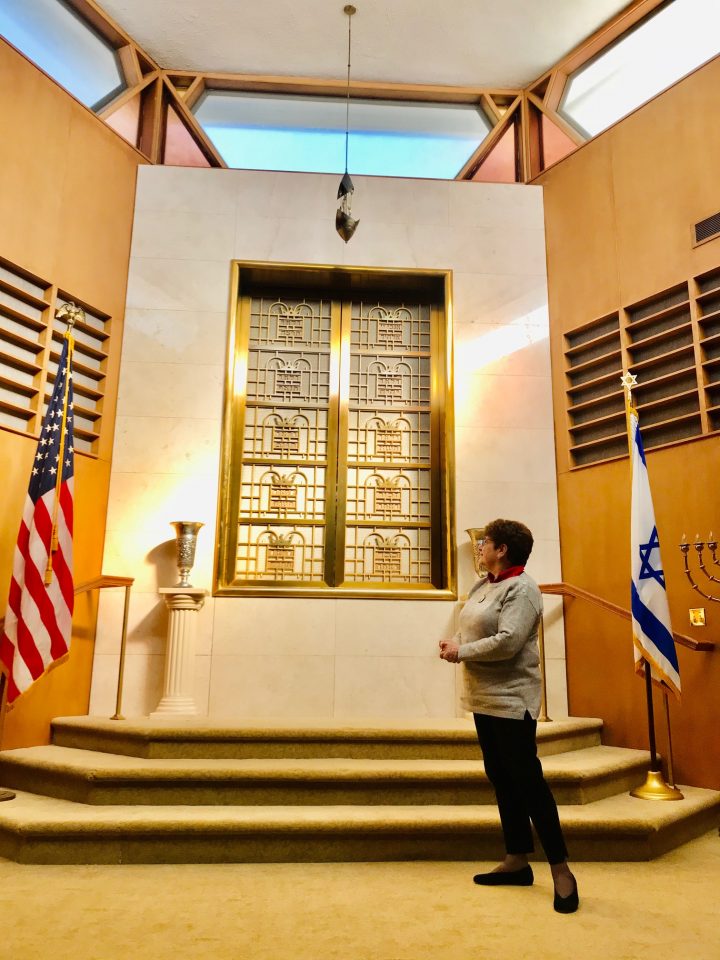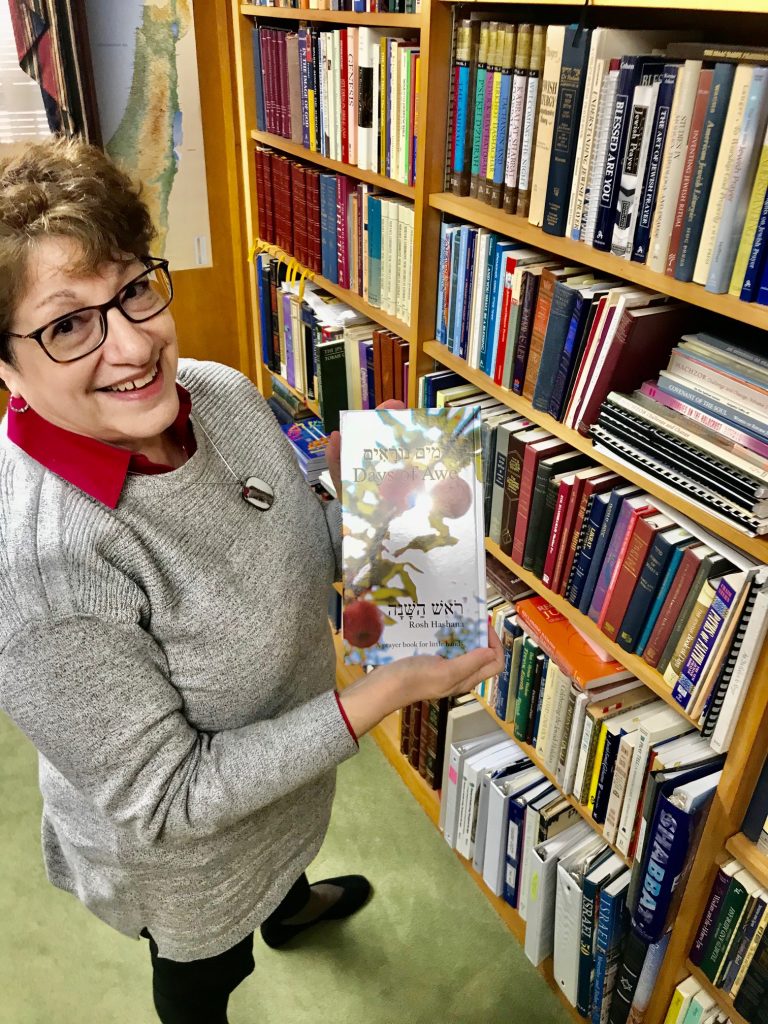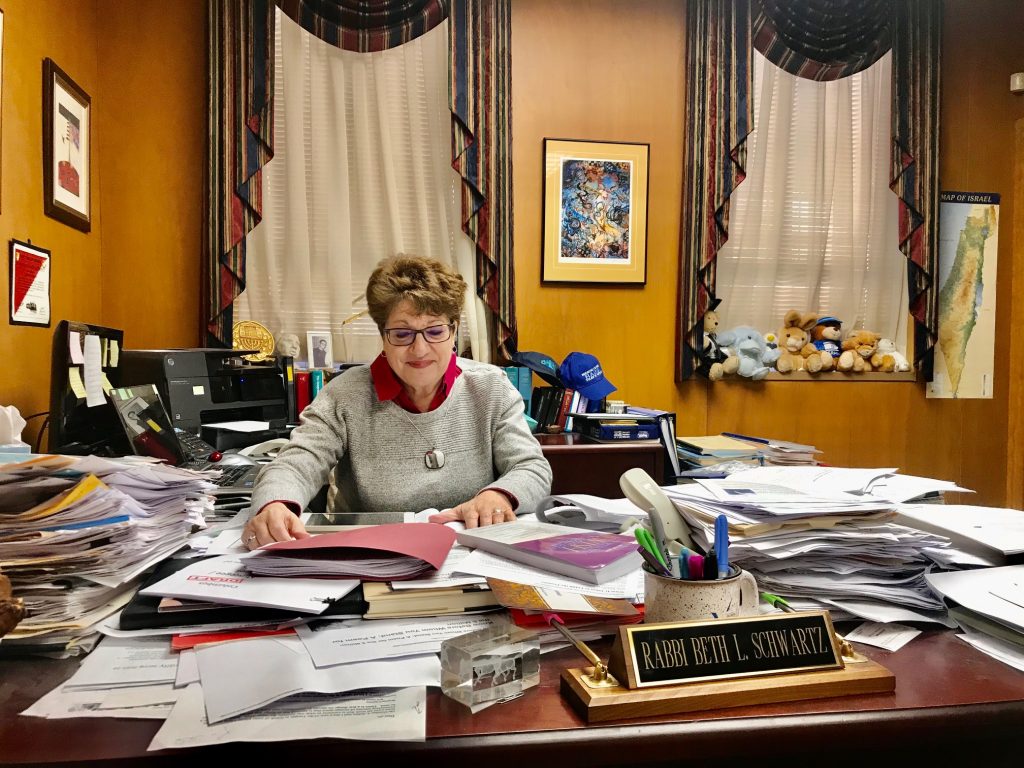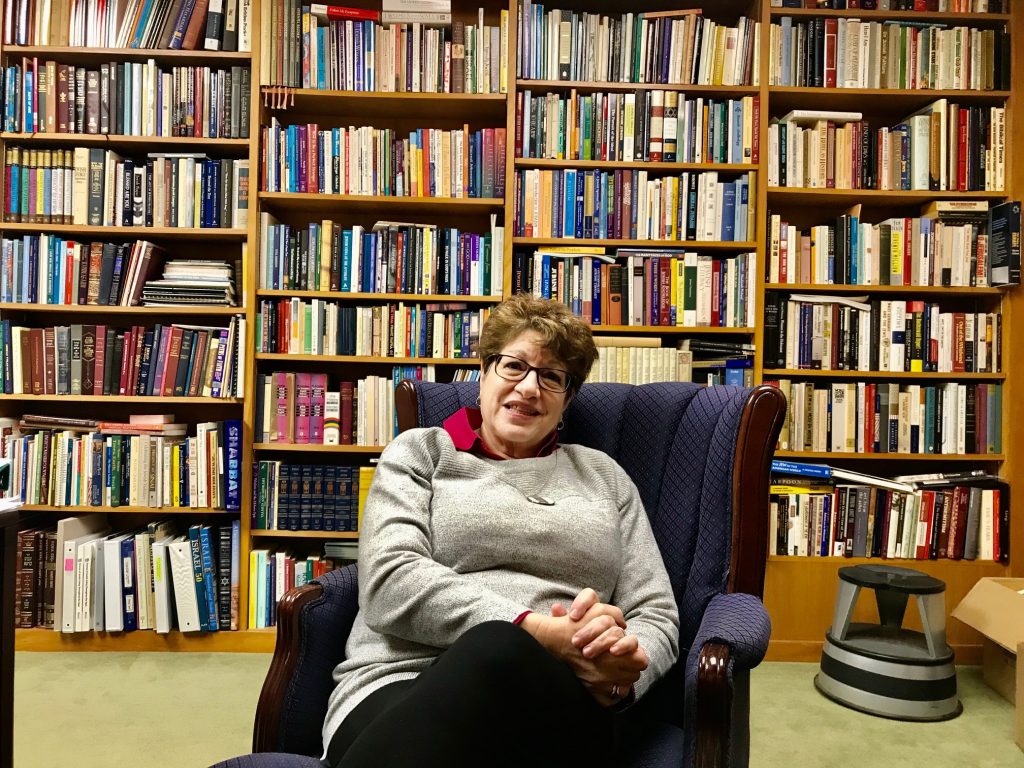
What does International Holocaust Memorial Day every January mean to you and the congregation here at Temple Israel?
“In the spring, within the Jewish world, there is an observance called Yom HaShoah, That is timed to coincide with the uprising at the Warsaw ghetto uprising. That’s mostly observed within the Jewish world, but World Holocaust Memorial Day makes everyone stop and think about their own prejudices.
It was unique to Jewish people as the target of Hitler but it has happened to other groups as well. Hopefully by remembering it, by seeing it in its true horror — and it is incomprehensible — draw attention to the worst of human behavior.
Our observances include memorial and worship services, so religious activities in the narrower sense. We understand that Auschwitz is a symbol of the murder of 6 million people and who knows how many millions of others. Holocaust has called us to stand at the epicenter to remember what the Nazi regime was all about.
When the question gets asked, ‘Where was God during the Holocaust?’ it is very common you hear the response, ‘That is the wrong question. The question is, ‘Where was humanity?’ So by having International Holocaust Memorial Day, it draws attention to humanity, about the power of hate and prejudice.”
One theory about the recent rise in anti-Semitism in Europe and in America is that we’re getting further and further away from the Holocaust and people don’t remember it.
“It’s an important point that we’re moving further away from living memory to historical memory. So we are losing that perspective. Every primary source, whether it’s memoires or photographs, helps ensure that what happened doesn’t get lost or forgotten.
I saw the publication of photographs from Sobibor, a concentration camp that was destroyed by the Nazis. There’s very little physical evidence of its existence, hardly any survivors. These were photographs taken by the deputy commandant of the camp, his personal photographs, and suddenly brings into focus something that was very blurry. Sobibor was the site of the most well-known rebellion by the prisoners, another layer of importance to those that think there was no resistance. There was lots of resistance in many different forms. But that was one of the few, if not the only, instances of active rebellion by prisoners in a concentration camp.
Having this photographic evidence is very important. The more we publish first-hand testimony and documentation, that is how we resist amnesia.”

that lines a wall in her office at the Wildwood Avenue synagogue.
In July 2019, there was an act of anti-Semitic vandalism at Temple Israel, by two suspects connected to far-right extremist group, the Patriot Front. What was the reaction among the congregation here?
“More people were angry than afraid. People were shocked. But we were very gratified by the response we received from the community as well as from law enforcement.”
Were they caught?
“No. Columbus Police took it very seriously. I still get calls from them about steps they’re taking to track the perpetrators down. The case is still open.”
Were you surprised it happened?
“Yeah. You know it’s going on, that it’s increasing, but when it happens in your own community, it’s a surprise.”
In your role as the spiritual advisor to the congregants of Temple Israel, how do you respond to it?
“We talk about what gives us strength from our faith. We talk about what gives us pride. We talk about our resilience as a people.
As a Southern Jewish community, Columbus has been a welcoming pace and a supportive place. We’re Columbusites just like everybody else. And most of Columbus doesn’t even think about that.”
What do you think lies at the heart of anti-Semitism? Is it parallel to the rest of human hatred?
“What we do know is that anti-Semitism has its roots in the rejetion of Judaism by early Christians.
It’s more like a specific sect that gradually moved away. The interpretation of those folks of Judaism say Jews killed Jesus, that’s been a very powerful myth but it’s not true. It’s been a part of church policy in the Catholic Church. Remember that until 1519, the Catholic Church was the only Christian church in Europe.
People learned to blame the other for whatever was going wrong in their lives. Economic hardship, disease, serfdom, all kinds of hardships were blamed on the other. In Europe, Jews were the other.
There were also the Crusades, where Crusaders said they were going to the Holy Land to get rid of the infidels. On their way, particularly through France and Germany, they said, ‘There are infidels right here!’
The persecution of Jews has a long and very deep history within Christianity and in the Muslim world, as well, because Jews just wanted to maintain their own faith. We’re not persuaded to abandon Judaism for other faiths. That’s very frustrating. On top of blaming Jews for many things, Jews would not change and be like everybody else.
Anti-Semitism comes in many forms. It’s economic, social, cultural, and spiritual dislocation turned outward. Those who are exploiters use that and use it to convince their audiences is the real cause is somebody else. And that people in power are not the problem — but the Jews.”

What can you tell me about the history of Temple Israel and about the history of the Jewish community in Columbus?
“The Jewish community held its first formal religious service in Columbus in 1856. Our charter dates to 1859. The first Jewish burials in Linwood Cemetery were in 1852.
The early Columbusites who were Jewish tended to be in the merchant class. They tended to come from central Europe, German-speaking countries, which meant that they came with some education, with middle-class values, with economic skills. Those things were welcomed here in Columbus, and in many other parts of the country. They returned that hospitality with hard work and dedication.
We have records in our archives that talk about that early community as being men of integrity, men dedicated to the welfare of the community, that they were respected. The stereotype of Jews as peddlers and shopkeepers was not part of the vocabulary.
We were tradesmen; we were merchants; we were lawyers. We were part of the mix. We know of Raphael Moses, who was a quartermaster in the Confederate Army. We have Saul Loeb, part of the petitioners who lobbied to bring the telephone to town. We know that they were Jews who were part of the effort to make Ft. Benning a permanent Army installation.
In post-Civil War times, when the School Board was first formed, members were appointed.
Representatives came from each religious community, including the Jewish community..
We were active in supporting the public-school system. During the Depression, members of this community helped start the Milk Drive, which made sure all children in public school had fresh milk everyday. A small thing, but something the Jewish community would choose — health and nutrition for all children.”
How would you describe the congregation here at Temple Israel?
“We are small, but dedicated.
Christian congregations count individual members. Jewish congregations count household units.. We have between 100 to 120 household units, with close to 200 adult members.
We are affiliated with the Union for Reform Judaism, which puts us on the liberal side of the spectrum. As Reform Jews, we take very seriously the messages of the prophets regarding social justice. We’re very focused on the welfare of the community. The focus is on education, on children, on Ft. Benning. We have a strong outreach program on base; we provide hospitality to basic trainers on Sunday morning.
Our women’s association, the Jewish Ladies Aid Society, supports Hope Harbour. We have reading programs at a middle school. We try to stay focused because we don’t have a lot of resources. But we do what we can.”
I’ve heard from members here that you often open the floor up to discussions on topics like immigration and the death penalty. Why do you do that?
“This congregation, we’re very conversational. The congregation here likes a more conversational approach.
I do specifically on occasion focus on a topic of current interest. A hot topic, so I can share what our tradition has to say. We can say we favor a particular position on a particular issue because of our social-justice tradition.
I want them to be knowledgeable about what that tradition has said about something like the death penalty. And I want to hear what they think and give them an opportunity to respond. Because the Jewish tradition of study is conversation.”
Does that ever get risky as far as stepping into current topics and politics and offering opinions?
“That’s always going to be true.
But on the other hand, I represent that tradition and I represent that prophetic message and that’s part of my role as a rabbi. To say here’s what your tradition says about that. You may have a different opinion, but here’s what Jewish tradition has to say about that.
Heading into elections, I don’t say who to vote for, but I do say, ‘Here are the values I want you to take into the voting booth. Here are the things that are important to us: compassion, justice, mercy, opportunity.’
If I can call people to conscience, then I don’t have to name names.”
What do you foresee with the next generation of congregants at Temple Israel?
“I hope they are still interested in what our tradition has to teach us. And equally interested in taking those values out into the community.
I hope that they are proudly Jewish. Not to be afraid to wear a Star of David or wear a kippah on their head.
I hope that they say, ‘We’re part of Columbus and we contribute.’ To say, ‘Here I am at the library, at the symphony, at the school event.’ To say, ‘Here I am standing up for equal opportunity. Here I am working on behalf of the homeless or the hungry.’ These are things that we do that I hope will continue.”

ECL Editor Frank Etheridge’s interview with Rabbi Beth Schwartz. 1.29.2020
Age: 70
Education: Bachelor of Arts in History, State University of New York; Master’s in Education in Counseling for Higher Education, George Mason University; Doctorate in Rabbinic Ordination from Jewish Institute of Religion
Family: Widow (husband Lawrence Washington, a descendant of George Washington, a social worker, was an active volunteer with Hope Harbor and Muscogee County Jail); two grown children, a grandson, and five grand-dogs
Favorite figure in Jewish history: “Moses. I have to say Moses because he is so complex. We see his complexity, we see his struggles, and we see his personal growth.”
Community cause involvement: “I helped shepherd the Continuum of Care into existence, which brings together all the services for the homeless into one system. I served as the first chair of the board of directors.
Homelessness is part and parcel of so many other issues. People not secure in having a place to call home, a place to sleep, a place to be, that just ripples out in so many ways.”
Favorite local tradition: “Deli Day. It brings together the congregation to make it happen and brings together the community to come and fill our building.”
Biggest challenge of the job: “It’s not just in the Jewish tradition but everywhere, there are fewer people who affiliate these days. The largest group of religious identification in our country today is None. There are values to tradition, there are values to a community of worshipers.”
Biggest inspiration of the job: “My congregants.”
